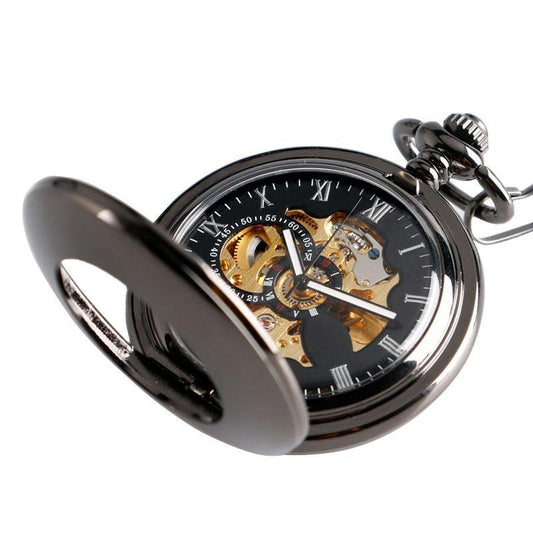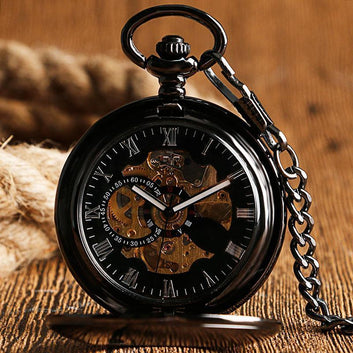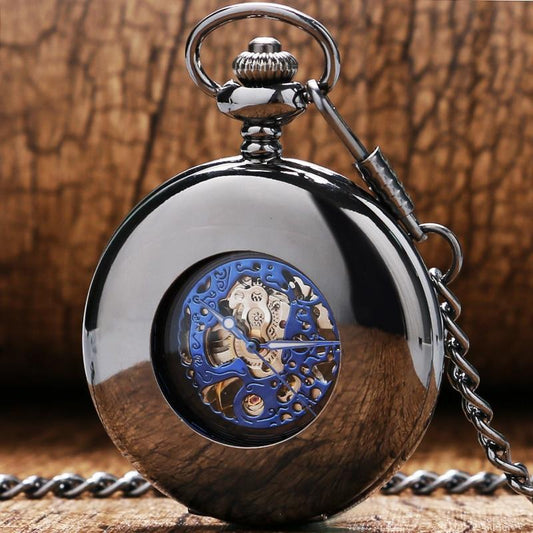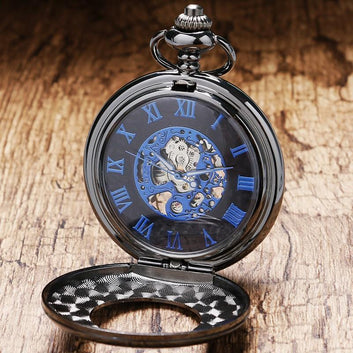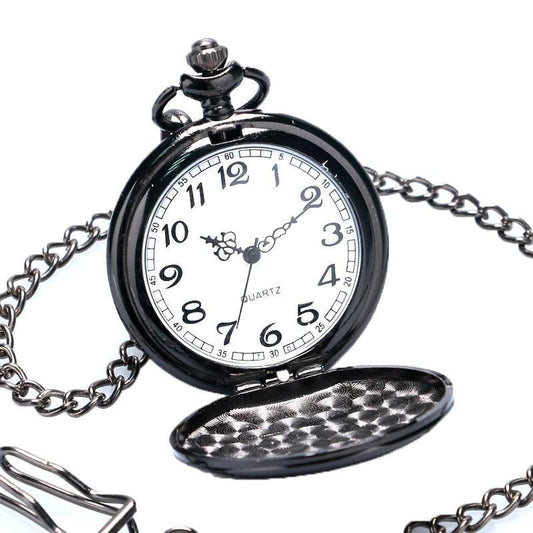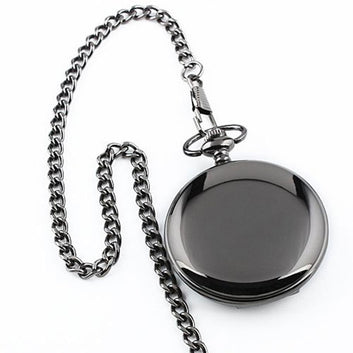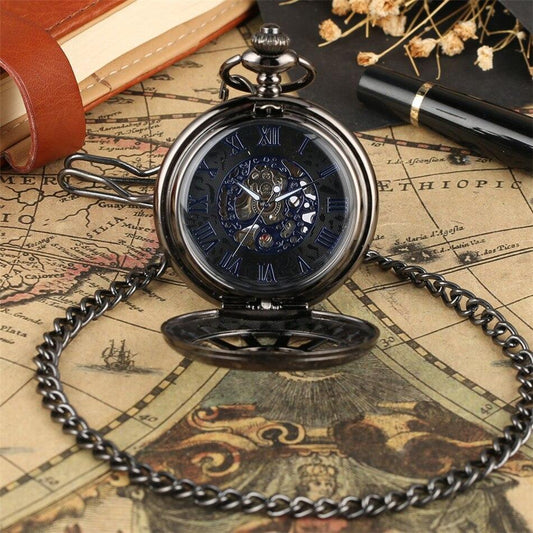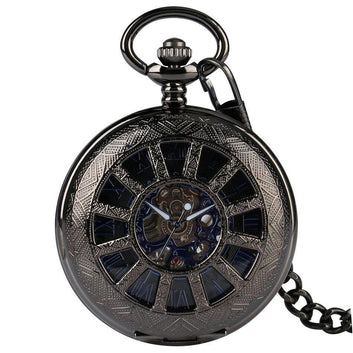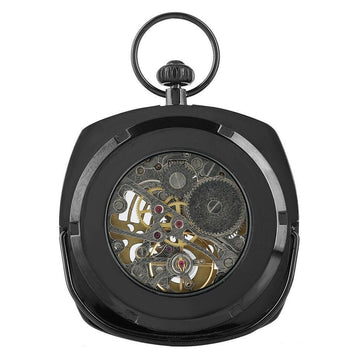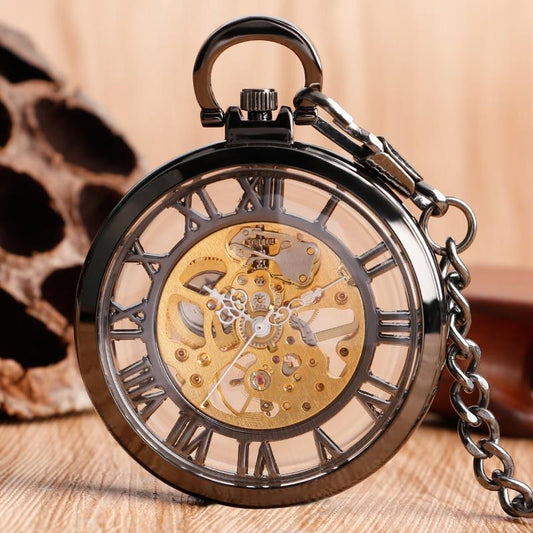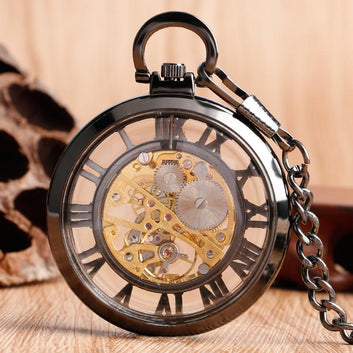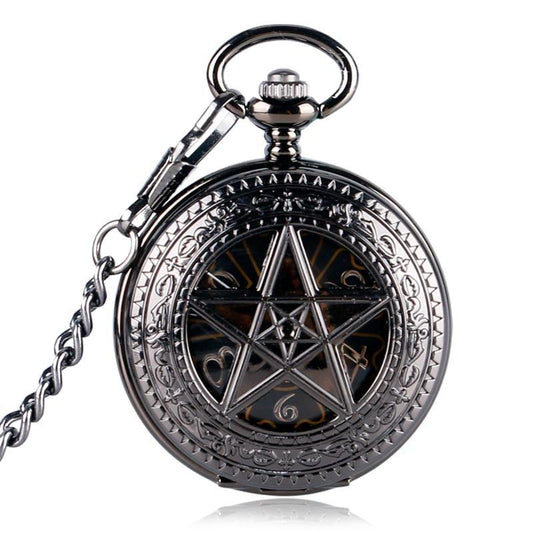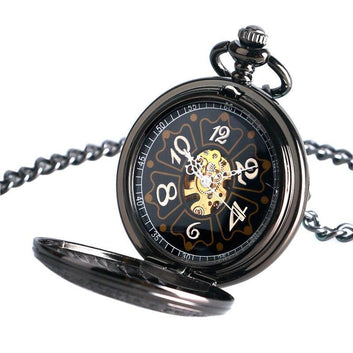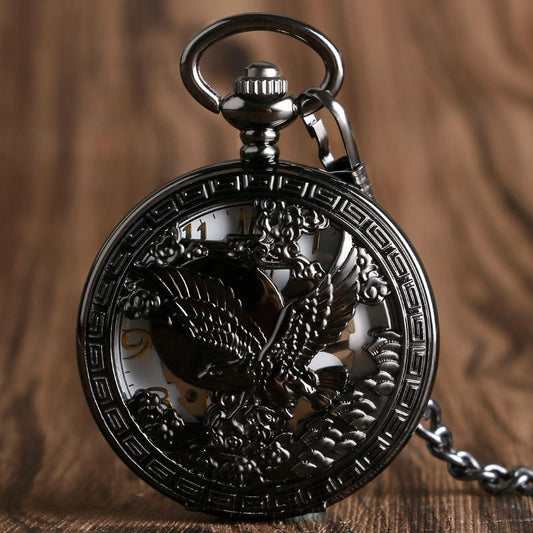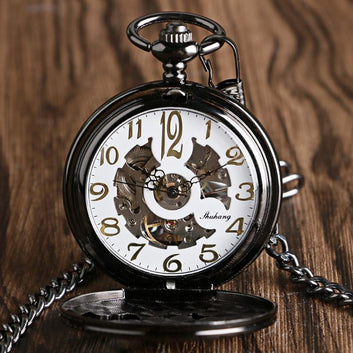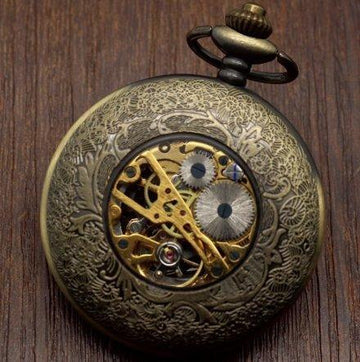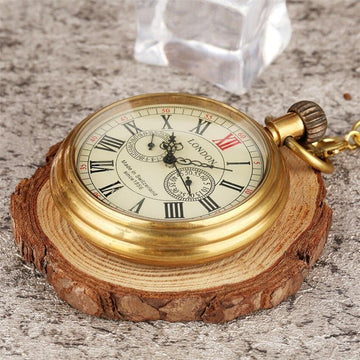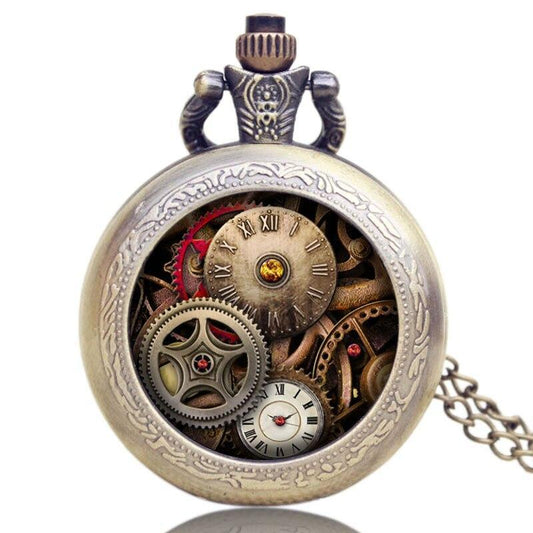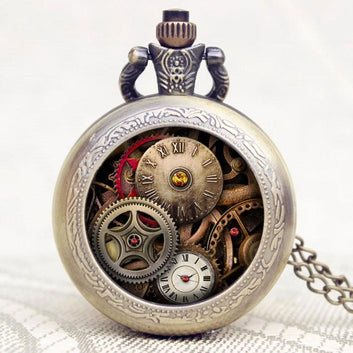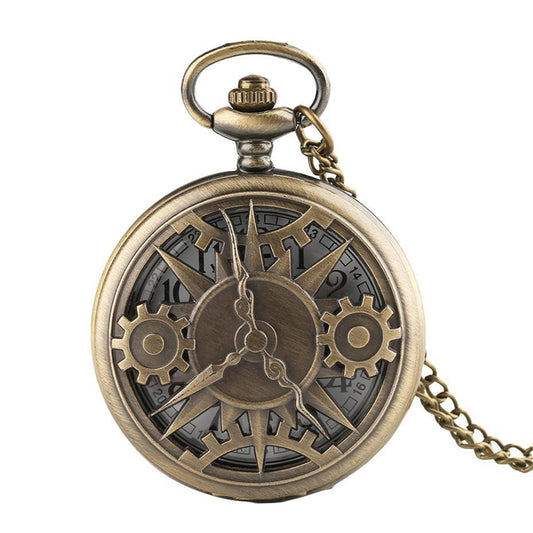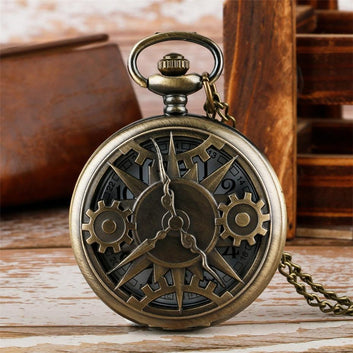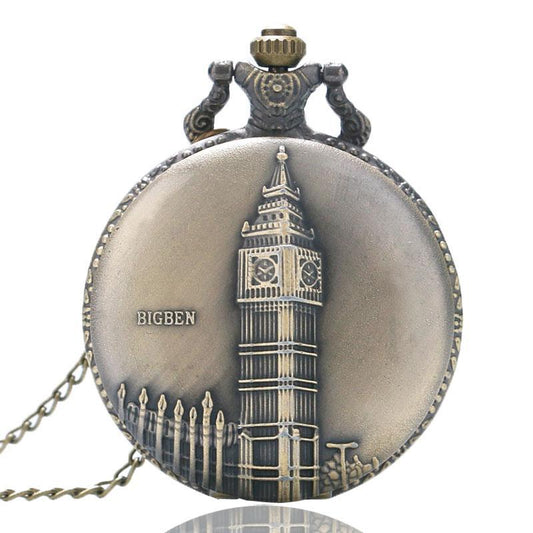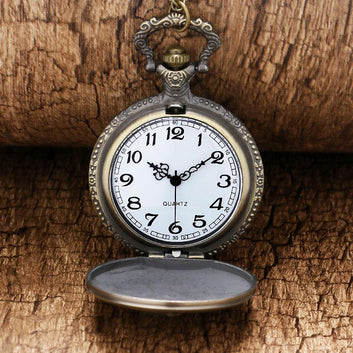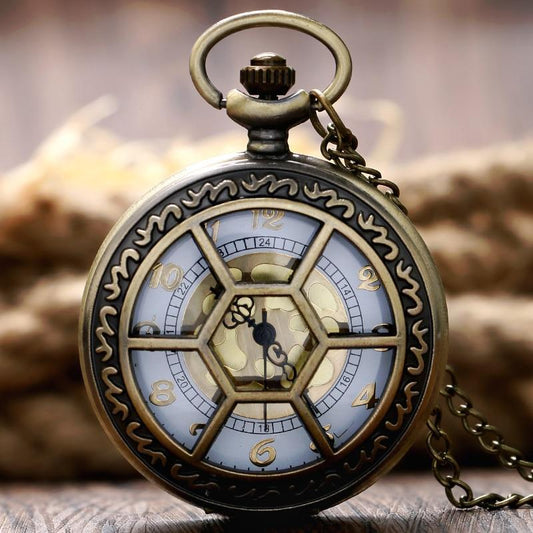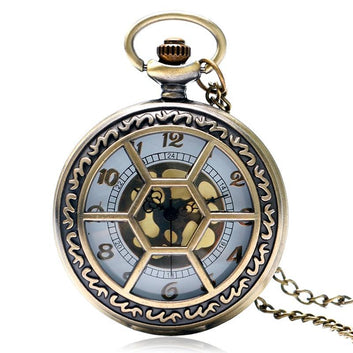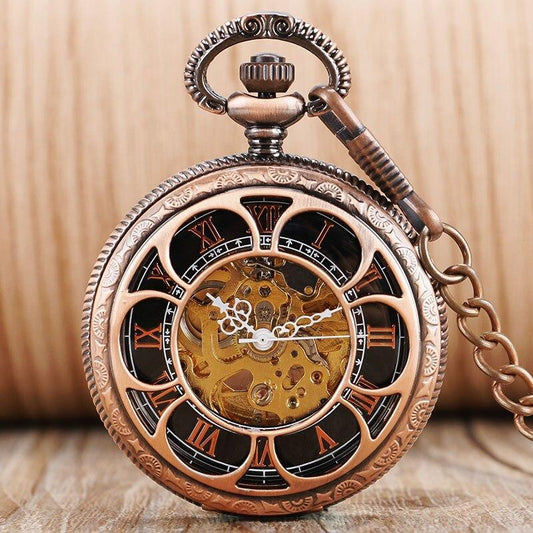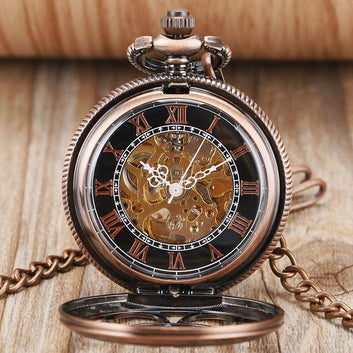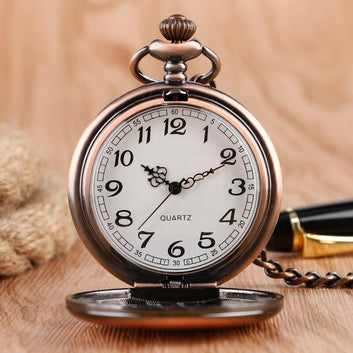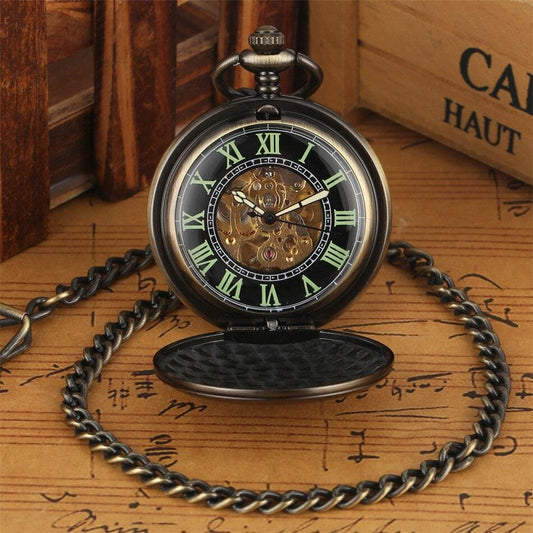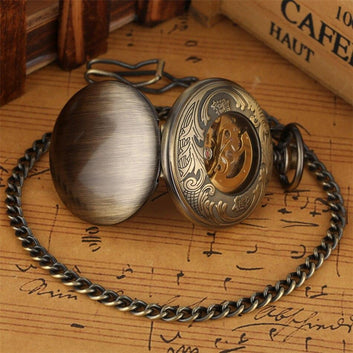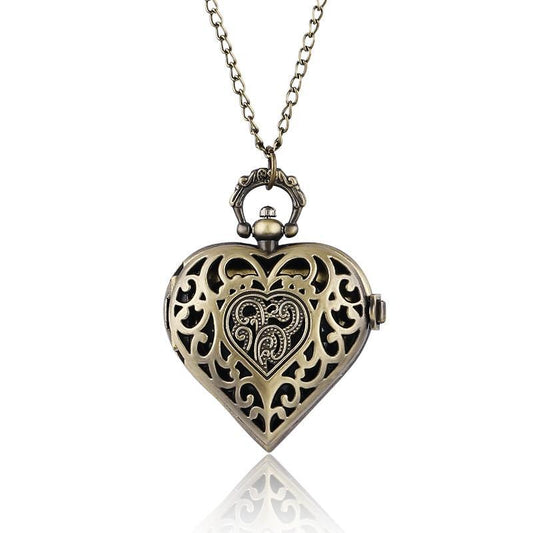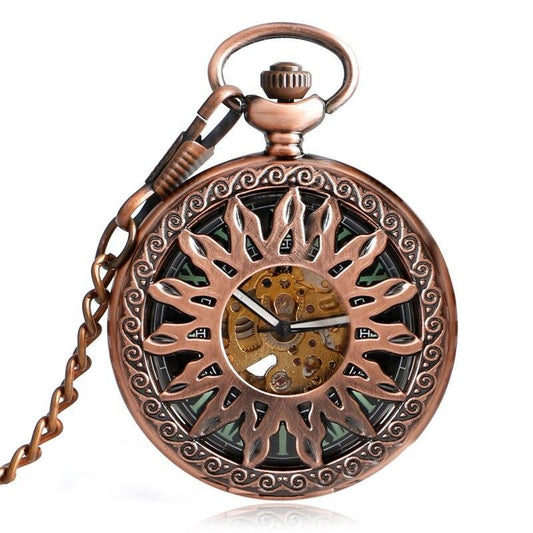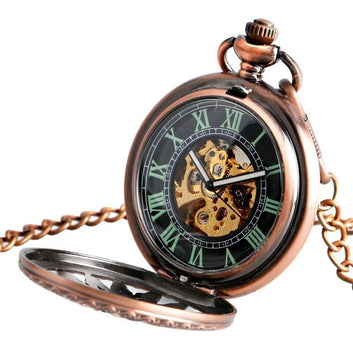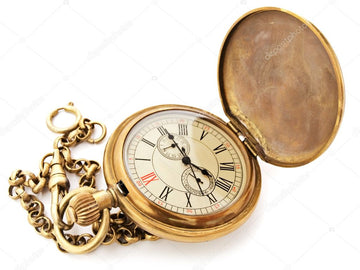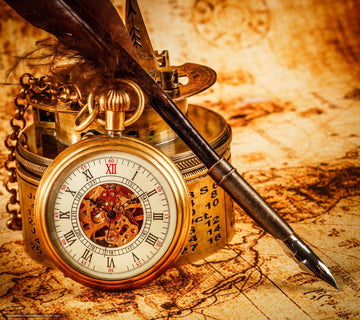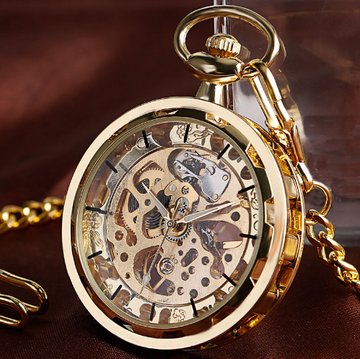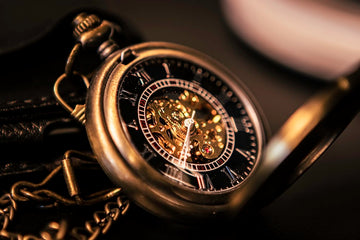
Pocket Watch
Black Pocket Watch
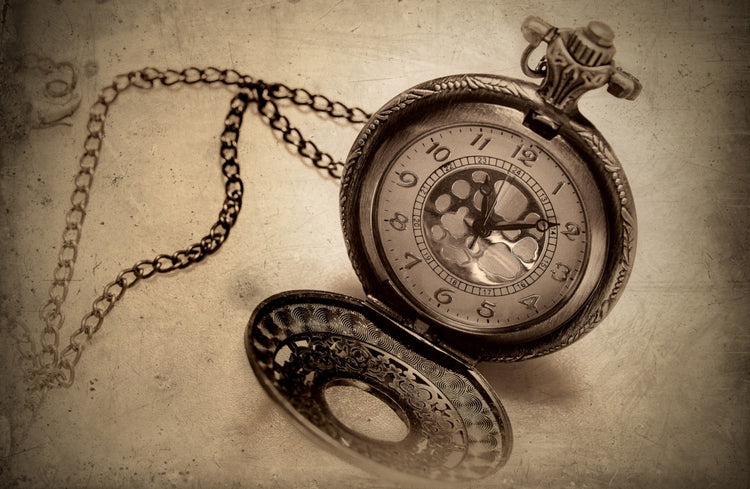
Where is my pocket watch ?
Steampunk Pocket Watch
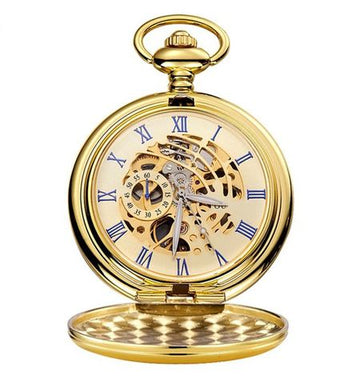
Pocket watch, the best chic vintage accessory.
The pocket watch is the perfect vintage accessory for men and women of taste.Whether you opt for a pocket watch, a nurse watch or a pendant watch, you will find the right fob watch to fit your wardrobe.
The new reference site for pocket watches opens its doors to you and invites you to discover a universe of particularity and elegance through its various collections. From the basic watch to the sophisticated design, we offer you quality pocket watches at reasonable prices.
You are not the biggest fan of quartz pocket watches? Choose our classic mechanical hand-wound pocket watches. If you don't want to be on the lookout for when you need to wind your watch, then you can check out our automatic movement pocket watches. If you are not familiar with these terms, we invite you to take a look at our blog post about the different technologies used in the manufacture of our pocket watch movements.
Do you want to learn more about this unique artifact? Do not hesitate to browse our blog and check out our articles of advice, history and explanations on the fascinating world of pocket watches.
Copper pocket watch
Pocket Watch Blog
Why choose us?
Among the tools of time measurement, pocket watches, whether worn in a pocket or as pendants, are the ancestor of portable timepieces. Our vintage watches are dedicated to retro style fans, clock enthusiasts or collectors of second hand and antique jewelry. All of our watches are affordable, uniquely styled and available to you without having to go to the auction market.
We offer all types of pocket watches: Sober, Gothic, Owl, Skeleton watch, Keychain, Necklace ... they can be worn around the neck, in the small pocket of your jeans or in your watch holder. The quartz of our watches comes from Japan, known to be the nemesis of the precious Swiss watches. The movement of our mechanical pocket watch model is made of high quality clockwork, resistant in time.
You will be able to read the time on your vintage stainless steel watch, with the repetition of different types of hands ("Breguet", "glaives" etc...) running through Arabic or Roman numerals, offering the perpetual pleasure of contemplating its solid acrylic dial while caressing its case decorated with fine floral engravings. Whether it's your first watch or a gift idea, each watch is sold in perfect condition with a protective pocket and chain. All you have to do is choose your favorite pocket watch!
Short history of the pocket watch
Everything has a beginning. And if you think time begins somewhere, consider the beginning of time measurement as well. Early man developed a system for knowing the exact date. But a device that tells the exact time comes much later.
Water clocks, sundials and candle clocks were the first instruments that somehow managed to tell the time, but accuracy was far from being achieved.
In the 13th century, clocks weight were developed. It used gears while the hour hand was already in use, while the minute hand was an indication of luxury and wealth. Clocks Weight were publicly displayed on church steeples, town halls and monasteries.
In the 16th century, clocks were produced using the spring instead of the weight. Portable clocks or Fob watches were the first timepieces that the public could own. At that time, the only people who could own them were the wealthy and owning one signified the person's status, authority and wealth. Often portable watches were placed on the wall of the house. The term "wearable" did not mean, however, that it could be worn on the pocket. The term changed its meaning a few years later.
The first transportable watches or pocket watches were also used in the 16th century. This time the clocks did not have to stay in one place. Pocket watches could already be worn around the neck or carried in a pocket. The same era also brought a revolution in the development of pocket watches. Mechanisms were introduced to bring accuracy to the time indication. Some pocket watches were even equipped with an alarm.
The entrance of the 17th century made the pocket watch even more desirable. The boxy image was removed and replaced by more rounded and slimmer cases. Watchmakers also became instant artists, as they infused patterns and craftsmanship into every pocket watch they made. When Christian Huygens discovered the law of the pendulum, which for your information was different from Galileo's, the clock had gone one step further. This law proved to be very useful for the development of pocket watches.
In the 18th century, pocket watches continued to evolve. This time, jewelry was used as bearings. Diamonds became an integral part of some pocket watches, which drove the price of a single pocket watch through the roof. Oil was also a part of pocket watches during this time. It was used to lubricate and smooth the movement of the watch hands.
In the second half of the 18th century, pocket watches were produced with three hands. In contrast to the inclusion of the minute hand during the 16th century, the second hand was logical, as the accuracy of the time indication was much better.In the 19th century, packet watches had their heyday. This era brought several watchmakers on the scene. Names such as LeCoultre & Cie, Ulysse Nardin, Minerva, Heuer, IWC and many others came into being during this time. The quality of pocket watches became better than ever.
At the turn of the 20th century, certificates were issued to watchmakers who created accurate watches. Unlike earlier years, the issuance of certificates became more of a requirement than a luxury. And over the years, the popularity of pocket watches declined as wristwatches became more popular. Although pocket watches are not used so much today, they have been one of the important instruments for many centuries.

